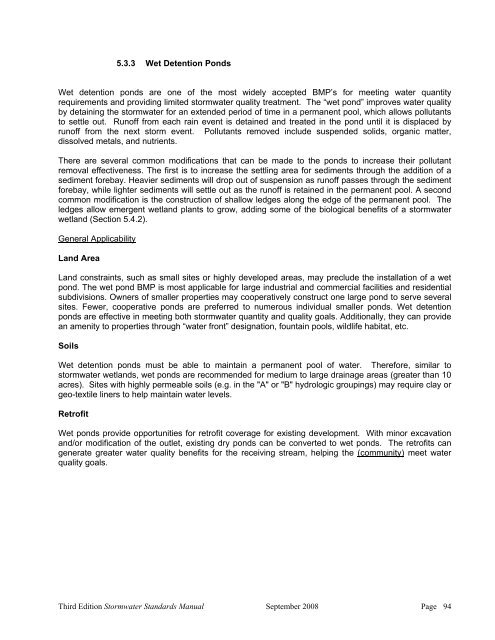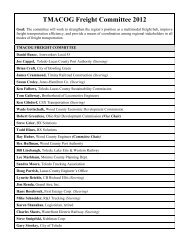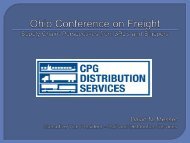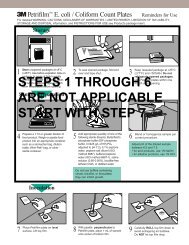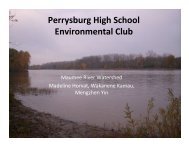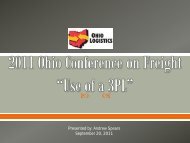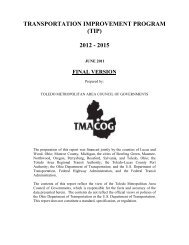Stormwater Management Standards Manual - Toledo Metropolitan ...
Stormwater Management Standards Manual - Toledo Metropolitan ...
Stormwater Management Standards Manual - Toledo Metropolitan ...
Create successful ePaper yourself
Turn your PDF publications into a flip-book with our unique Google optimized e-Paper software.
5.3.3 Wet Detention Ponds<br />
Wet detention ponds are one of the most widely accepted BMP’s for meeting water quantity<br />
requirements and providing limited stormwater quality treatment. The “wet pond” improves water quality<br />
by detaining the stormwater for an extended period of time in a permanent pool, which allows pollutants<br />
to settle out. Runoff from each rain event is detained and treated in the pond until it is displaced by<br />
runoff from the next storm event. Pollutants removed include suspended solids, organic matter,<br />
dissolved metals, and nutrients.<br />
There are several common modifications that can be made to the ponds to increase their pollutant<br />
removal effectiveness. The first is to increase the settling area for sediments through the addition of a<br />
sediment forebay. Heavier sediments will drop out of suspension as runoff passes through the sediment<br />
forebay, while lighter sediments will settle out as the runoff is retained in the permanent pool. A second<br />
common modification is the construction of shallow ledges along the edge of the permanent pool. The<br />
ledges allow emergent wetland plants to grow, adding some of the biological benefits of a stormwater<br />
wetland (Section 5.4.2).<br />
General Applicability<br />
Land Area<br />
Land constraints, such as small sites or highly developed areas, may preclude the installation of a wet<br />
pond. The wet pond BMP is most applicable for large industrial and commercial facilities and residential<br />
subdivisions. Owners of smaller properties may cooperatively construct one large pond to serve several<br />
sites. Fewer, cooperative ponds are preferred to numerous individual smaller ponds. Wet detention<br />
ponds are effective in meeting both stormwater quantity and quality goals. Additionally, they can provide<br />
an amenity to properties through “water front” designation, fountain pools, wildlife habitat, etc.<br />
Soils<br />
Wet detention ponds must be able to maintain a permanent pool of water. Therefore, similar to<br />
stormwater wetlands, wet ponds are recommended for medium to large drainage areas (greater than 10<br />
acres). Sites with highly permeable soils (e.g. in the "A" or "B" hydrologic groupings) may require clay or<br />
geo-textile liners to help maintain water levels.<br />
Retrofit<br />
Wet ponds provide opportunities for retrofit coverage for existing development. With minor excavation<br />
and/or modification of the outlet, existing dry ponds can be converted to wet ponds. The retrofits can<br />
generate greater water quality benefits for the receiving stream, helping the (community) meet water<br />
quality goals.<br />
Third Edition <strong>Stormwater</strong> <strong>Standards</strong> <strong>Manual</strong> September 2008 Page 94


